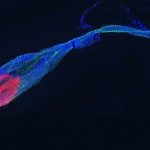Lien DOI – 10.1039/D4CS00799A
Chem. Soc. Rev. 2025, 54, 2948-2983
Storage of genetic information in DNA occurs through a unique ordering of canonical base pairs. However, this would not be possible in the absence of the sugar–phosphate backbone which is essential for duplex formation. While over a hundred nucleobase modifications have been identified (mainly in RNA), Nature is rather conservative when it comes to alterations at the level of the (deoxy)ribose sugar moiety. This trend is not reflected in synthetic analogues of nucleic acids where modifications of the sugar entity is commonplace to improve the properties of DNA and RNA. In this review article, we describe the main incentives behind sugar modifications in nucleic acids and we highlight recent progress in this field with a particular emphasis on therapeutic applications, the development of xeno-nucleic acids (XNAs), and on interrogating nucleic acid etiology. We also describe recent strategies to conjugate carbohydrates and oligosaccharides to oligonucleotides since this represents a particularly powerful strategy to improve the therapeutic index of oligonucleotide drugs. The advent of glycoRNAs combined with progress in nucleic acid and carbohydrate chemistry, protein engineering, and delivery methods will undoubtedly yield more potent sugar-modified nucleic acids for therapeutic, biotechnological, and synthetic biology applications.




